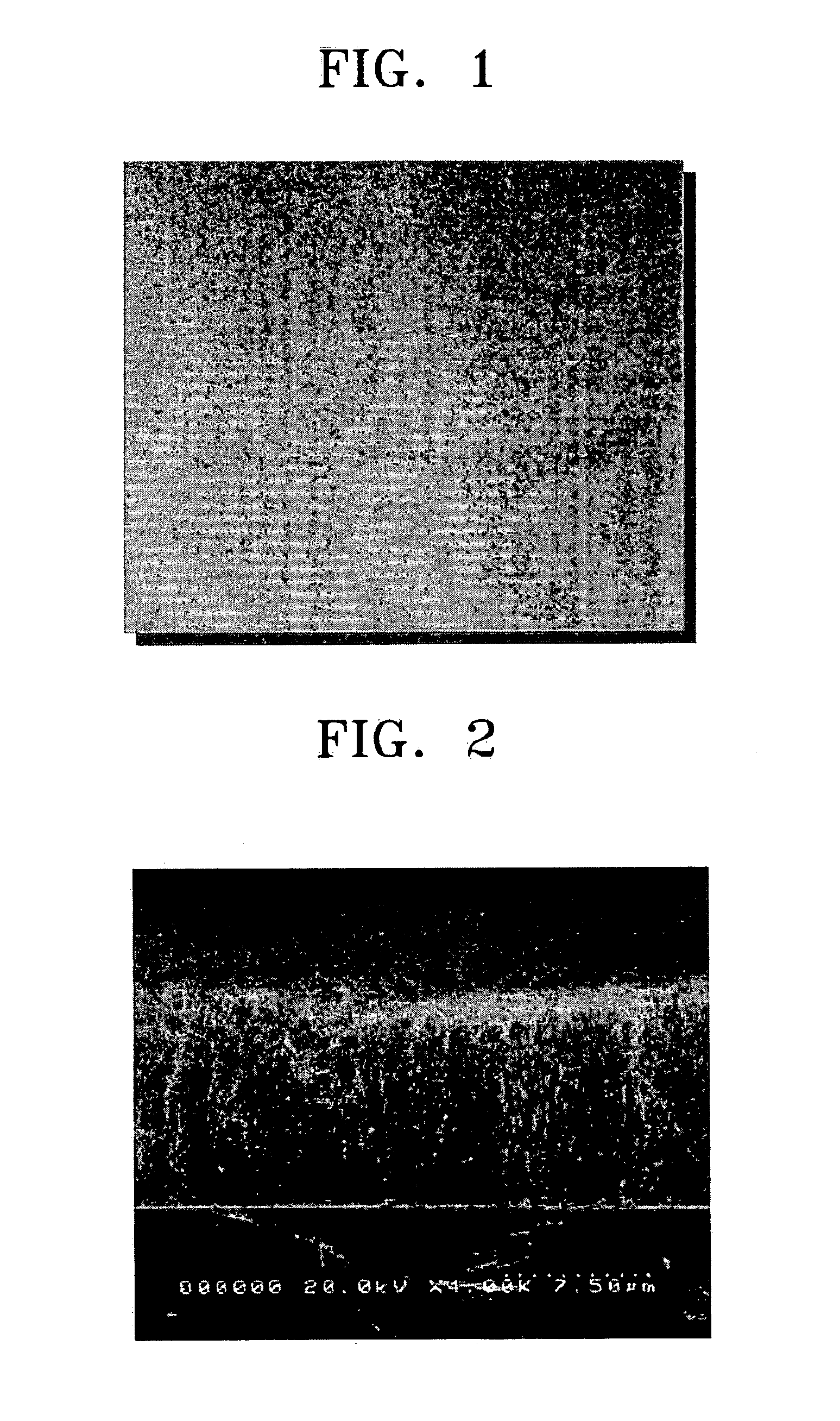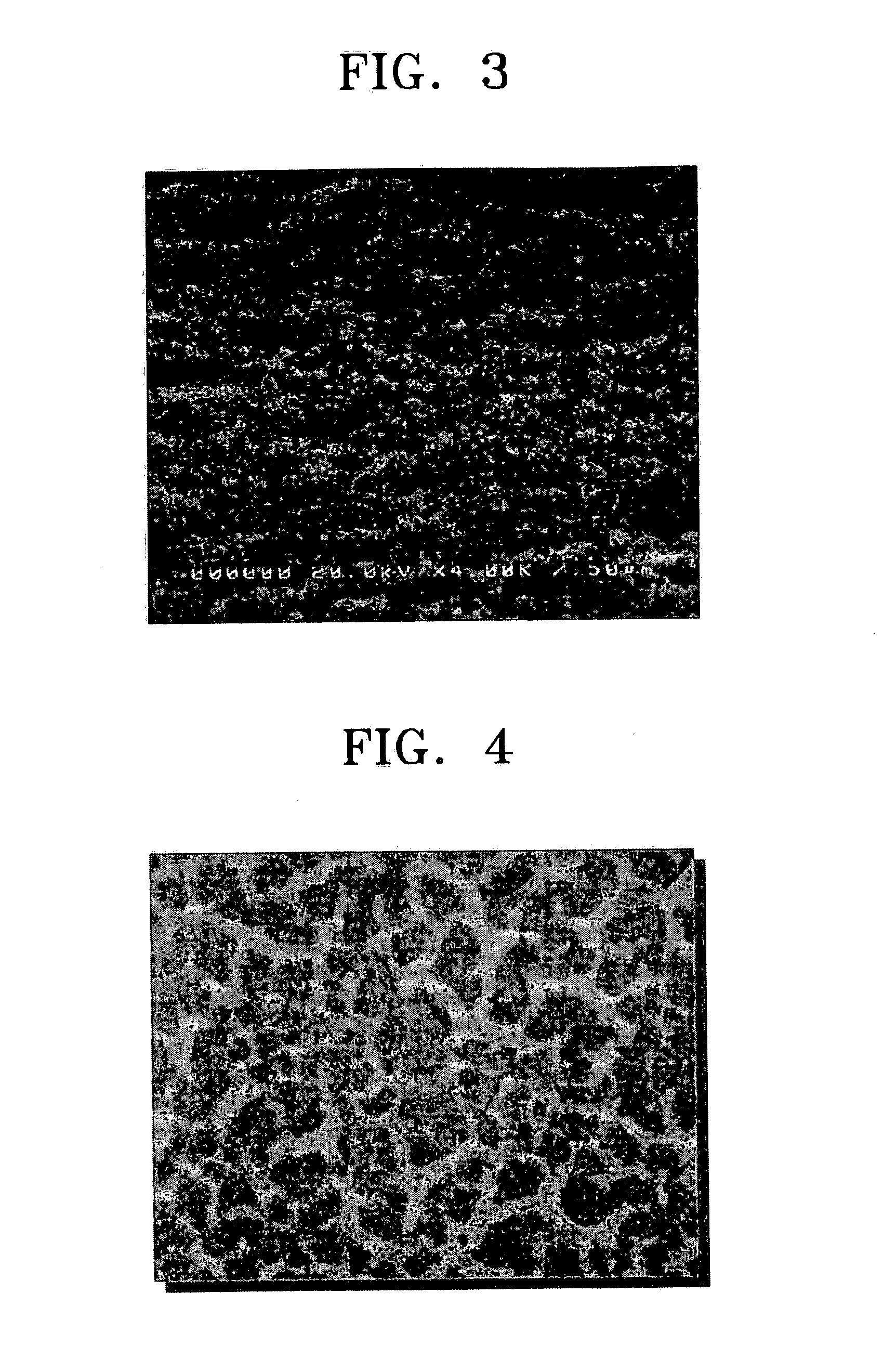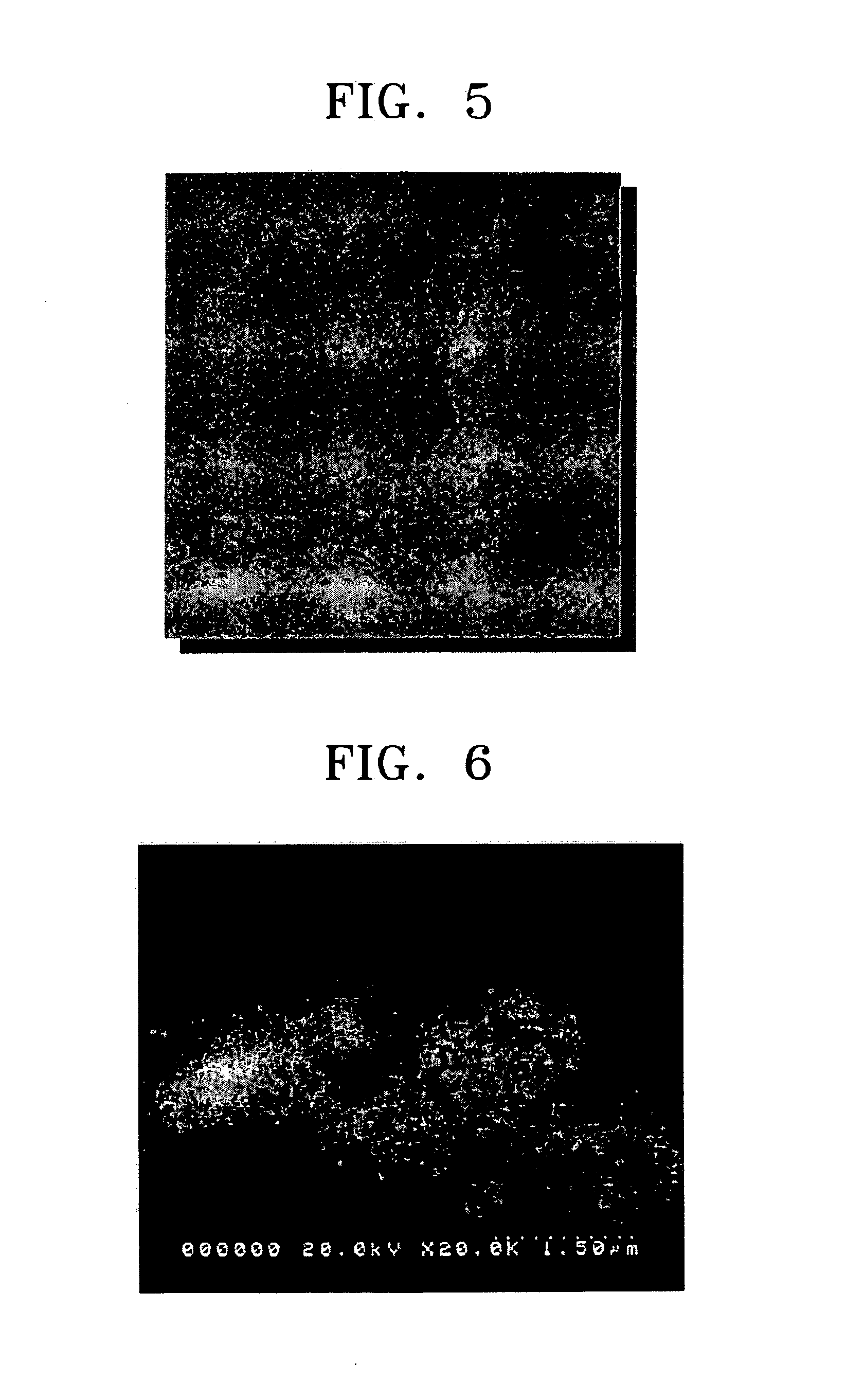Method of preparing catalyst for manufacturing carbon nanotubes
a carbon nanotube and catalyst technology, applied in the field of preparing a catalyst for manufacturing carbon nanotubes, can solve the problems of difficult control of the diameter and the length of the carbon nanotube, low carbon nanotube yield of arc discharge and laser deposition, and complicated purification process. achieve the effect of improving uniformity and increasing uniformity
- Summary
- Abstract
- Description
- Claims
- Application Information
AI Technical Summary
Benefits of technology
Problems solved by technology
Method used
Image
Examples
example
[0057] A 40 mM iron acetate solution was prepared using ethanol and ethylene glycol as a solvent. 20 mL of ethanol and 20 mL of ethylene glycol were added to 0.1 g of iron acetate powder to obtain a solution having a proper viscosity. A silicon substrate with a diameter of 20.32 cm was dipped in the obtained solution. The coated substrate was cooled immediately with liquid nitrogen and then transferred into a vacuum chamber. Then, a vacuum less than 0.1 mmHg was applied to the chamber in order to evaporate the solvent. To minimize an amount of the remained solvent, the substrate was further heated at 100° C.
[0058] The freeze-dried substrate was heat-treated at 300° C. for 10 minutes in order to oxidize the iron acetate. Then, the substrate was subjected to a reduction treatment with hydrogen at 600° C.
[0059] As a result, the iron particles were uniformly formed on the substrate. FIG. 1 is an electron microscopic image of iron particles formed on the silicon substrate according to ...
PUM
| Property | Measurement | Unit |
|---|---|---|
| Temperature | aaaaa | aaaaa |
| Molar density | aaaaa | aaaaa |
| Molar density | aaaaa | aaaaa |
Abstract
Description
Claims
Application Information
 Login to View More
Login to View More - R&D
- Intellectual Property
- Life Sciences
- Materials
- Tech Scout
- Unparalleled Data Quality
- Higher Quality Content
- 60% Fewer Hallucinations
Browse by: Latest US Patents, China's latest patents, Technical Efficacy Thesaurus, Application Domain, Technology Topic, Popular Technical Reports.
© 2025 PatSnap. All rights reserved.Legal|Privacy policy|Modern Slavery Act Transparency Statement|Sitemap|About US| Contact US: help@patsnap.com



